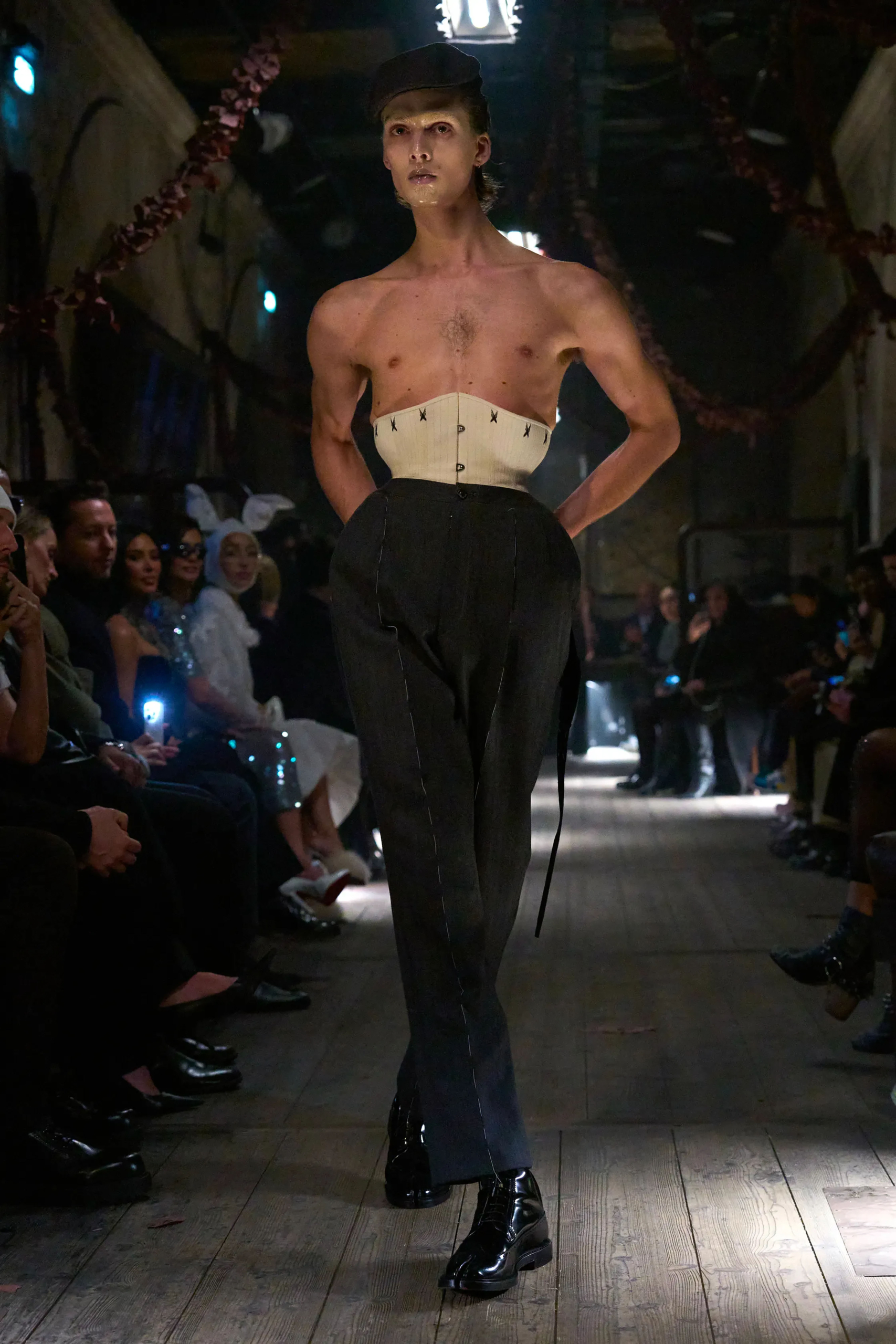Now is the time to pay very close attention because we are in the midst of a Fashion Renaissance. In January, John Galliano, the current creative director at Maison Margiela, officially debuted their Spring/Summer 2024 collection. Instead of the fashion show taking place in a typical châteaux-esque venue, it was held under what seemed to be an old bridge in the streets of Paris. Singer Lucky Love began by giving a heartfelt performance of his song ‘Now I don’t Need Your Love’. This was followed by a dramatic short film that aided in setting the tone for the revolutionary spectacle fashion enthusiasts around the world were about to witness. Models came down the runway limping in beautifully deconstructed garments, their faces covered in a substance that gave them the appearance of porcelain dolls. As the collection progressed, the models’ clothing and stances also seemed to take on that of a lifeless doll, adored for their passivity. Many were brought to tears as Gwendoline Christie closed the show, strutting down with so much poise and confidence. To put it simply: this collection certified John Galliano’s status as a fashion legend.

Galliano manipulates the human figure beyond what is naturally possible.


The show depicts the transformation of being humanly flawed to painstakingly perfect.
For the past few decades, the ‘90s had widely been considered the Golden Age of haute couture. Chanel came out with the iconic Little Black Dress and Mugler was constantly debuting cutting edge collections every season. It was also a time where theatrics were heavily encouraged on the runway. Vivienne Westwood famously presented Kate Moss in her Spring/Summer 1994 collection topless eating an ice cream bar. Models were even made to seem as though they were competing with one another on the runway, such as when Shalom Harlow out-walked Amber Valletta while showcasing Todd Oldham’s 1995 Spring Ready-to-Wear collection, telling her to “Keep up!”. These antics excited the media. Everyone was constantly at the edge of their seats, wondering what would happen next. The runway was not solely about the clothing itself, it was also about the performance. No one embodied this idea better than the late Alexander McQueen.

From having machines spray paint plain dresses in his 1999 Spring Ready-to-Wear collection, to models controversially walk down in cages during his 1997 Spring Ready-to-Wear collection titled ‘La Poupée’, McQueen absolutely lived for the drama. He revolutionised high fashion, always bringing in new ideas and keeping audiences engaged. In many ways, he pioneered the scantily clad styles that are now commonplace within everyday life now, never shying away from displaying the female figure in its entirety. Surely, the ‘90s would not have been so impactful without his presence.


This iconic moment shocked not only the world, but Supermodel Shalom Harlow herself. McQueen truly was always one step ahead.
When McQueen passed away in 2010, the fashion world truly felt his loss. The runway became more and more tame, restricting models to simply act akin to mannequins. The focus fell mostly on the clothes, which also tended to be more minimalist and simple in design. This was also around the time when nepotism models such as Lila Moss and Kendall Jenner became more commonplace within the industry. Modelling was simply a hobby to them. This lack of drive previously required to enter the industry certainly translated onto the runway. They often appeared bored and uninterested in whatever was going on. Overall, the fashion scene following McQueen’s passing lacked the charm and mystique it once had.

Dramatic silhouettes and motifs allow audiences to be intrigued, without necessitating any explanation.


Wun perfectly integrates the doll within the look, making it more couture than costume.
Fast forward to now, and it seems as though this has completely shifted within the ongoing season. Practicality is out; Outrageousness is in. Robert Wun had models covered in fake blood with life-sized dolls on their backs. Junya Watanabe’s designs were more-so soft sculptures than actual clothing. And of course, Galliano showed his affinity for ridiculously constricting corsets. Are these collections totally unwearable? Yes! Do we want more? Absolutely!
 Anaïs-Aimée Rafaelsen is an artist and critic based in Toronto. Her work has been shown in exhibitions as well as featured in The Walrus. She is currently obtaining her BDes in Material Art and Design at OCAD University.
Anaïs-Aimée Rafaelsen is an artist and critic based in Toronto. Her work has been shown in exhibitions as well as featured in The Walrus. She is currently obtaining her BDes in Material Art and Design at OCAD University.

